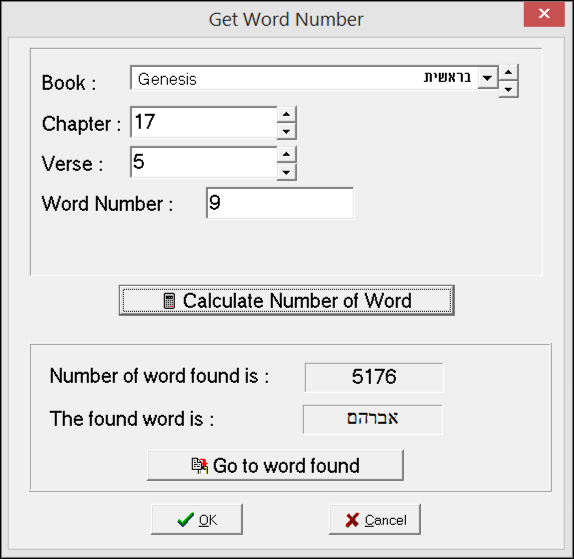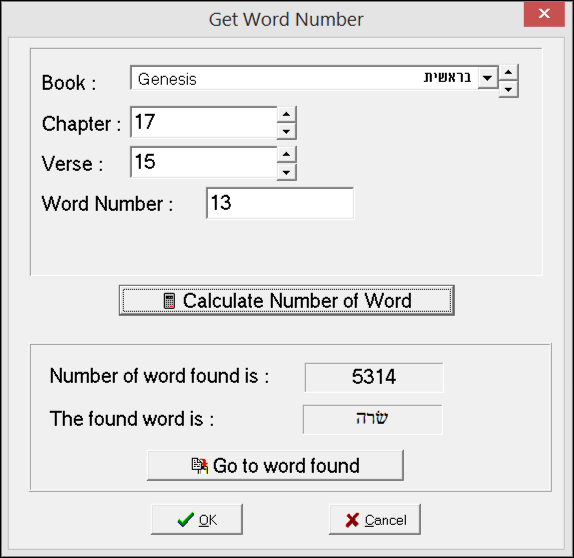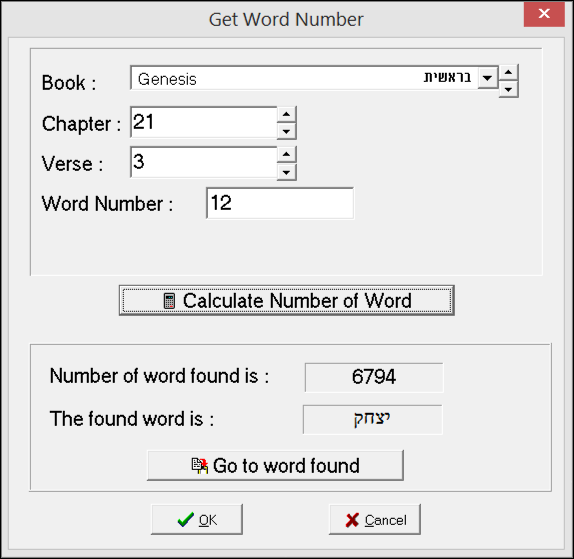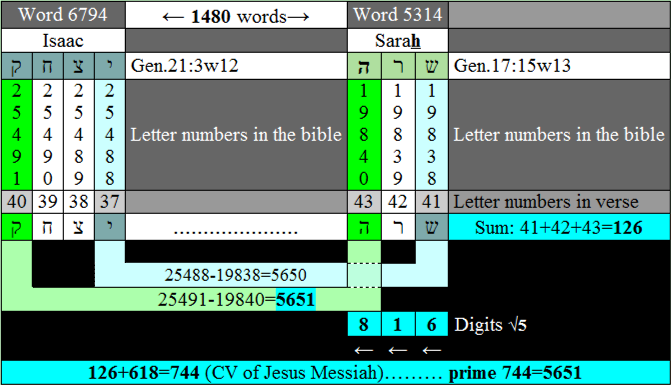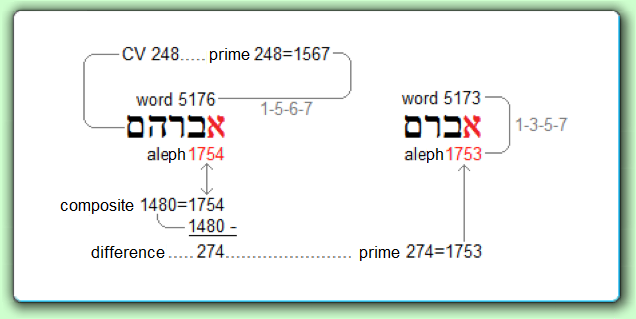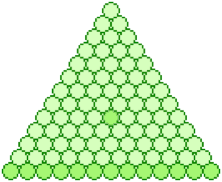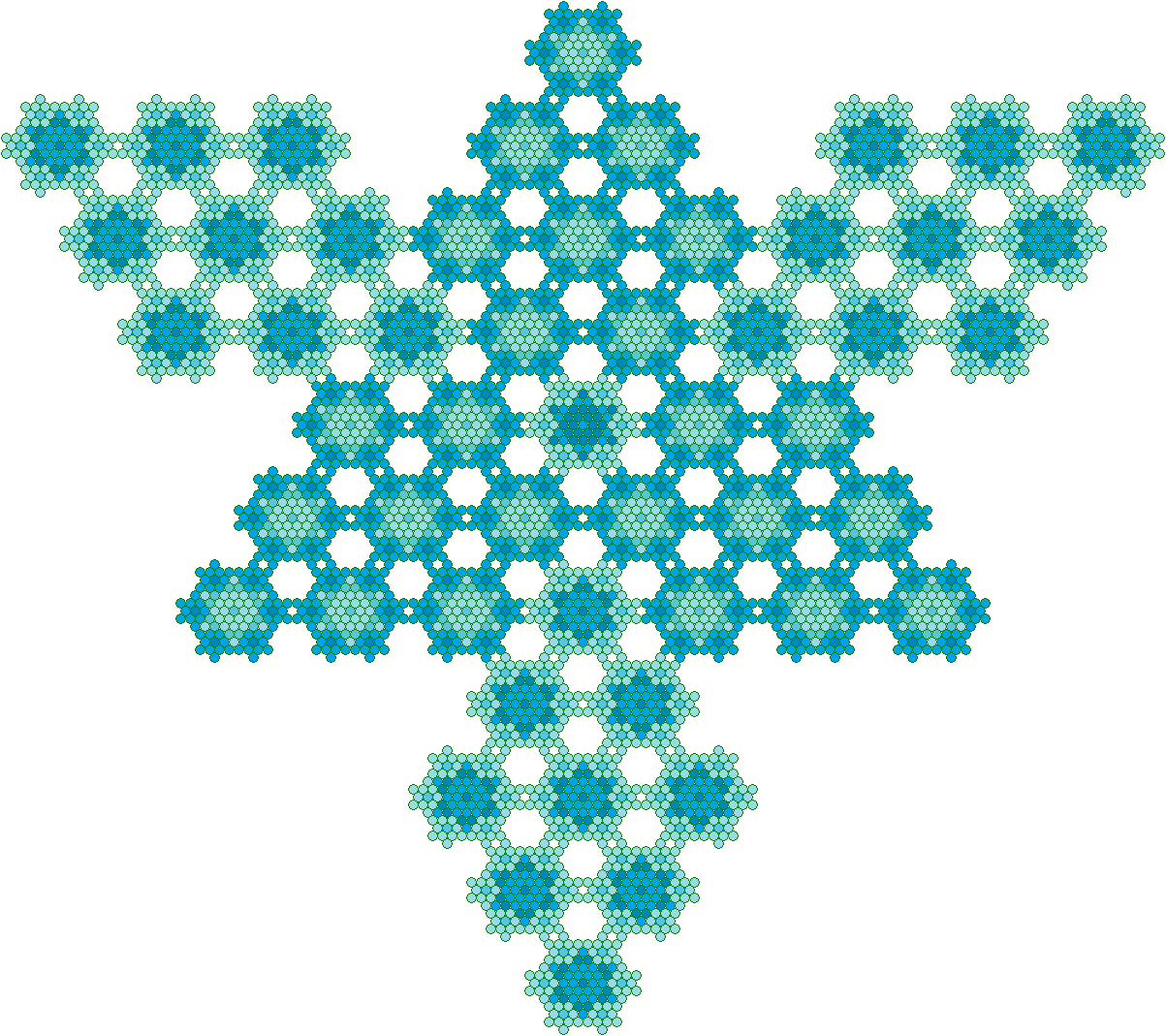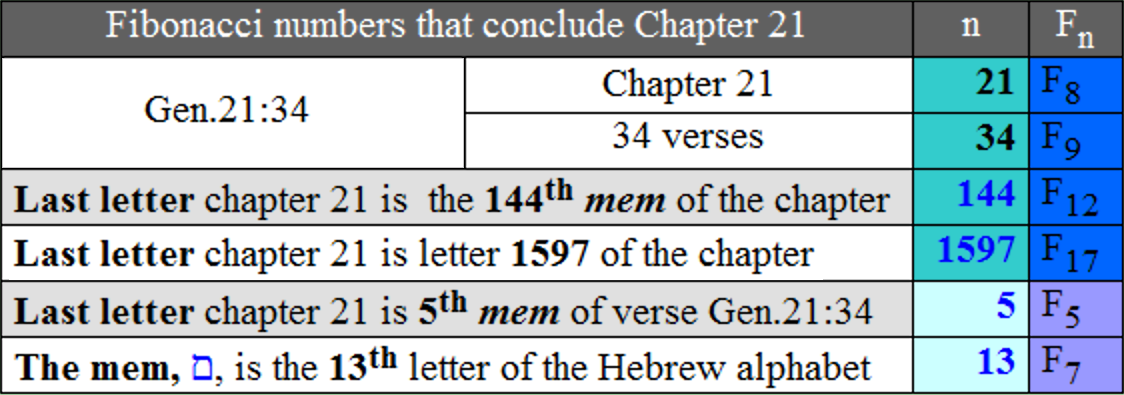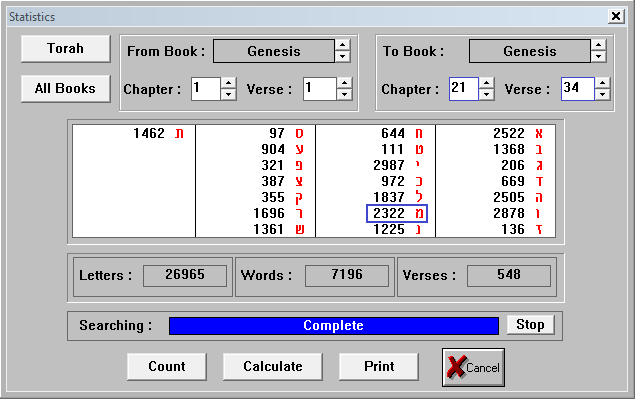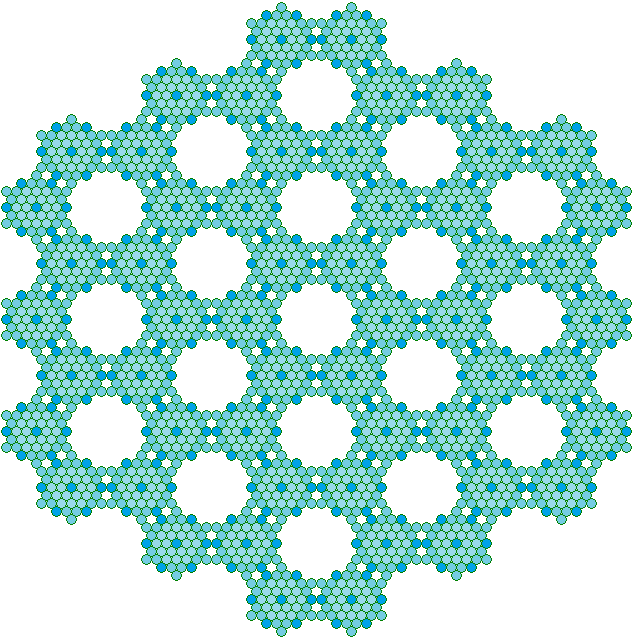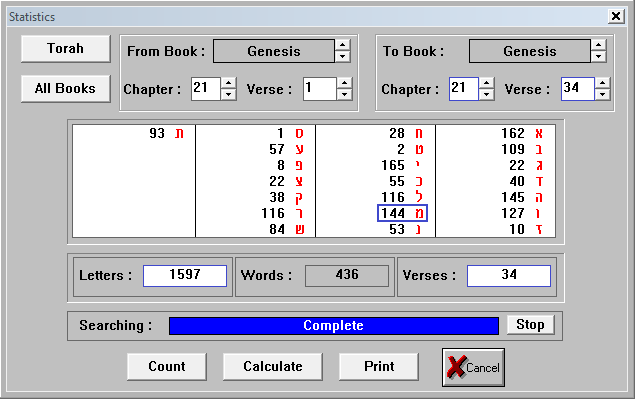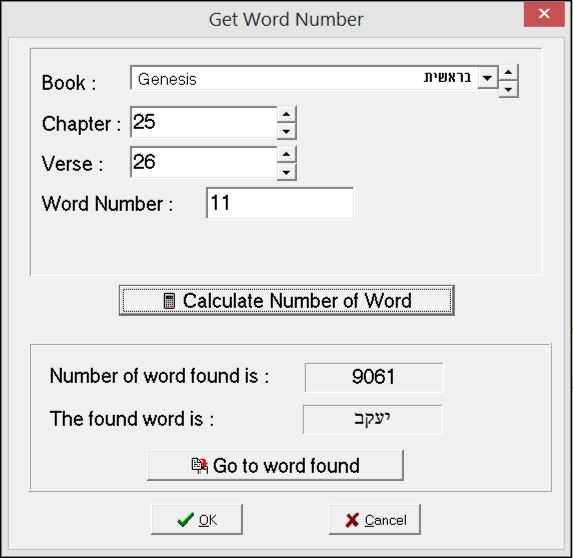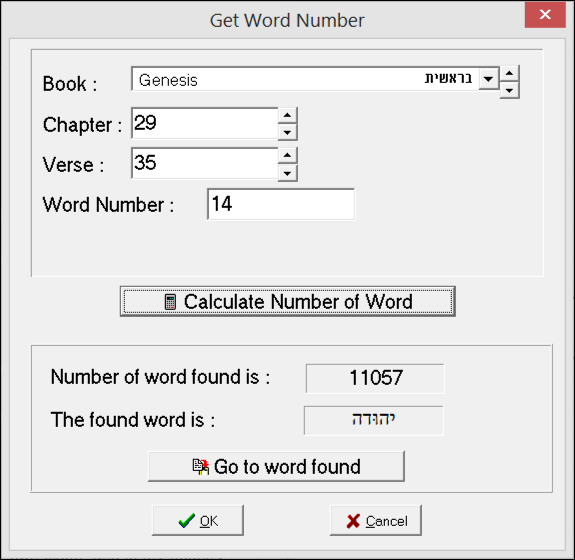|
√5 and Phi (Φ) In chapter 17 of Genesis, we saw that Abraham receives his new name and that the Hebrew Bible text is related to √5. Now, √5 also relates to Phi (Φ), the golden number (1618), which indicates the ratio of the golden ratio. In this chapter, I will show how the golden ratio is applied in the Bible, but first, let's look at what the golden ratio is. The golden ratio, also called the extreme and median ratio, is the division of a line segment into two parts in a special ratio. In the golden ratio, the ratio of the larger of the two parts to the smaller is the same as the ratio of the entire line segment to the larger. If we denote the larger part by a and the smaller part by b, then the ratio of the two is such that a : b = (a + b) : a. (see Wikipedia)
The formula for phi is:
In the pentagram, the five-pointed star, all line segments are divided by the golden ratio:
The pentagram and the golden ratio.
Further down, another image of the first five verses of Genesis 17, where I've highlighted the letters. If we count all 18 letter places from the "hee" in chapter 17, up to and including the name Abraham, the total is 1847.
This number 1847 is the 284th prime number, which is the CV of θεος, God in Greek. 284 is a numeral anagram of 248, the CV of the new name Abraham. It is also notable that Gen.17:5 has a total of 22 letters that appear in the name Abraham: 17 up to and including the name Abraham and 5 in the phrase afterward. The resh does not appear in the phrase after the name Abraham, but the mem appears twice. This phrase reads: "For I will make you the father of a multitude of nations," and in Hebrew has 17 letters and 5 words.
If we count the 5 letter places in the 17-letter phrase from the beginning of that phrase, the sum is: 3+4+5+6+12=30, equal to the letter place of the hee, ה, that is added to the name Abram. The fifth of those 5 is the mem, the 40. Then 5x40=200, which is the letter place of the hee of Abraham in chapter 17. The mem occurs twice in the 17-letter phrase, at positions 6 and 12. The sum is 6+12=18: .....the hee of Abraham is the 18th hee of chapter 17. In the verse, the positions of the two mems are 37 and 43, together 37+43=80, which is the numerical value of 2x mem, 2x40=80. The resh, ר, which does not appear in the 17-letter phrase, is found three times in the first part of the verse, at positions 6, 18, and 29. Their sum is: 6+18+29=53, which is the 17th prime number. 53 is also the word number of Abraham in chapter 17. The resh has the numerical value 200, and the hee of Abraham is located at letter position 200 in chapter 17. Note: 200 is the 153rd composite number, and 153 is the triangular number of 17. Gen.17:5 And thy name shall no more be called Abram, but thy name shall be Abraham: for I have made thee a father of a multitude of nations.
The sum of the letter places of Abraham in the verse is: 27+28+29+30+31=145. This number 145 turns out to be equal to the CV of Abraham in Greek:
There are several ways to express the number 145. Here are four:
I'll leave it at that for now. There's more to be found, but we'd get lost amidst all those numbers. Now back to the golden ratio. This, in turn, is related to the Fibonacci sequence. The Fibonacci sequence is named after Leonardo of Pisa, nicknamed Fibonacci, who mentions the sequence in his book Liber abaci. The sequence starts with 0 and 1 and each subsequent element of the sequence is always the sum of the two previous elements. The Fibonacci sequence (often also called the Fibonacci series) turns out to have interesting properties and connections with, among other things, the golden ratio. The first elements of the row are then as follows:
02 – 12 – 12 – 22 – 32 –
52 – 82 ……..
This mathematical phenomenon is also found in nature, for example, in the structure of sunflowers (55-89 or 13-21), pineapples (8-13-21), pine cones (8-13), and many other natural structures. The following image is of a daisy-like plant and is constructed using F7 and F8, or 13-21:
Daisy:
13-21 In snail shells, we often see exponential growth that deviates from the Fibonacci sequence, but which operates according to a similar mathematical principle. The numbers from the Fibonacci sequence are certainly present in nature, or should I say: in God's creation? What I mean is that the Fibonacci numbers and the golden number have a visible relationship to life in general. And it is Jesus who says that He is life: Joh.11:25: Jesus said to her, I am the resurrection, and the life: he who believes in me, though he were dead, yet shall he live. Joh.14:6: Jesus said to him, I am the way, the truth, and the life: no man cometh unto the Father, but by me. The division between two consecutive numbers in the Fibonacci series ultimately produces a constant, which is equal to the golden number: 1.618… and the inverse division: 0.618
Only at F13/F12 (233/144) do the first four (five) digits of 1.618 become… constant. If the division is reversed (144/233), the constant is 0.618…. As you continue to divide between two consecutive Fibonacci numbers, more and more digits become constant. Note that the number 233 is the CV of the tree of life, החיים עץ:
The sum of the numbers 1618 and 618 is 2236, which is 26x86, and equal to the first four digits of √5. The numbers 26 and 86 are equal to the CVs of the words of Yahweh and Elohim, respectively. The numbers 1618 and 618 can be found in chapter 17 in relation to Abraham, Sarah, and Isaac. But why in chapter 17? Well, there may be a mathematical reason why we find them in chapter 17.
The triangle of 17 is 153 and has no single centroid. The three numbers found at the center are: 61, 72, and 73. The sum of these is: 61+72+73=206. And if we count these numbers from all three corners of the triangle, the result is: 3x206=618. This may be one of the mathematical reasons why this number is used in Chapter 17. We find the number 618 at Sarah's name. If we place the digits of √5 parallel to the verse where Sarah receives the "hee" in her name (Gen.17:15), i.e., one digit per letter, as we did in a previous chapter with Abraham, then we find the digits 6-1-8 in √5 at the positions of the letter places 41-42-43 of her name (note: it is read from right to left):
Incidentally, 618 is the CV of בריתו, his covenant: 6+400+10+200+2=618 (Ex.2:24w8: And God heard their groaning, and God remembered his covenant with Abraham, Isaac, and Jacob). The covenant that God makes with Abraham is transferred to Isaac through Sarah, for she will bear the heir of Abraham. The sum of the letter places in the verse of the name Sarah is: 41+42+43=126. Together with the number 618, the sum is: 126+618=744, equal to the CV of ישוע משיח, Yeshua Messiah, 358+386=744. Through Sarah the lineage runs to Jesus. Perhaps that seems a bit far-fetched, but then I offer the following for consideration. This first appearance of the name Sarah in the Bible in Gen.17:15 is word 5314. Up to the birth of her son Isaac in Gen.21:3 (word 6794), there are exactly 1480 words, equal to the CV of Christ, the Anointed One, Χριστος (600+100+10+200+300+70+200=1480). The lineage leads back to Christ through Sarah and Isaac. Keep in mind that when this text was written around 1400 BC, the Greek alphabet did not yet exist, and therefore the Greek letter values did not yet exist (see Wikipedia). Word
5314 (Sarah)+1480 (Christ)=word 6794 (Isaac)
However, from the first appearance of the name Abraham in Gen.17:5 (word 5176) until the birth of his son Isaac in Gen.21:3 (word 6794) there are exactly 1618 words: Word
5176
(Abraham)+1618 (golden number)= word 6794 (Isaac) Here we see the golden number 1618 of the golden ratio reappear. Another remarkable fact is that the first appearance of the name Abraham begins with the 1754th aleph of the Bible. What's so special about this? The aleph represents God's activity in the Bible. 1754 turns out to be the 1480th composite number, the number of the CV of Χριστος, Christ. The CV of Christ acts here on behalf of God. The difference between the two numbers is: 1754-1480=274. In chapter 17, word 274 is the name Isaac. God will continue his covenant with him. In Gen.17:21, where we find word 274 of chapter 17, God confirms for the second time that Isaac will be born of Sarah, even though she is already 90 years old (Gen.17:17) and it ceased to be with Sarah after the manner of women (Gen.18:11). Incidentally, the last time the name Abram (word 5173) appears in the text begins with the 1753rd aleph of the Bible. This is a prime number. 1753 is the 274th prime number. Note: The digits 1-3-5-7 of word number 5173 of the word Abram are identical to the digits of the aleph number 1753 of that word. We find something similar in the first appearance of the name Abraham, word 5176 of the Bible. The CV of the new name Abraham is 248, and the 248th prime number is 1567. Here we find the numbers 5176 and 1567 with the same digits. Whether this was done with a specific purpose is unclear to me, but this phenomenon caught my eye. Perhaps it was done to fix the word and letter placements in the text. It could also have been done because this is a crucial moment in Abram/Abraham's life. Sometimes this research raises more questions than I can answer.
Up to the birth and naming of Isaac (Gen.21:3), there are 2372 alephs in the Bible (note: Isaac, יצחק, has no aleph in his name). That is, from the aleph of the first appearance of the name Abraham: 2372-1754=618 alephs! From the appearance of the name Abraham in Gen. 17:5 to the birth of Isaac in Gen. 21:3, there are 1618 words, and those words contain 618 alephs. This seems significant to me. The 26th aleph in chapter 17 in the word ab, אב, father (Gen.17:5…..for I have made thee a father of a multitude of nations). This aleph is the first of the 618 alephs up to the birth of Isaac. The final aleph is found in the phrase where Sarah bears him a son. God's promise that Abraham would become the father of many nations is fulfilled with the birth of Isaac.
It's also interesting to note that the sum of the verse numbers where the new names of Abraham (verse 403) and Sarah (verse 413) first appear is: 403+413=816, a reversal of 618. This number is also the 3D number of T16 (3D-T16=816). I don't know whether we should attach any significance to this. After all, the verse numbers were only added to the Bible in the Middle Ages, but they helped me find the structure of the text. The last part of John 1:1 also has the numerical value 816:
The text here may indicate that God's Word is laying a cornerstone. The head of the corner, לראש פנה, has the numerical value: 135+531=666 (Ps.118:22). The sum of all possible divisors of 666, excluding the number 666 itself, is 816.
The fact that the number 666 itself is not included in the count may indicate that the situation is not yet complete. Its completion lies in the future. The book of the generations of Jesus Christ (Matt. 1:1-17) begins with Abraham (and Sarah). They are the "cornerstone" of the generations. The name Isaac is mentioned twice in an announcement by God before his birth. In chapter 17, these are word 243 (Gen.17:19w12) and word 274 (Gen.17:21w5). The sum of these two word numbers in chapter 17 is: 243+274=517. This number turns out to be equal to the verse number in the Bible describing Isaac's birth/naming (Gen.21:3 is verse 517). The second announcement is found in verse 419, where God's covenant with Isaac is mentioned (Gen.17:21). The composite is 419=517. So the second announcement in verse 419 already points to the birth of Isaac in verse 517. The sum of the verse numbers of the first announcement of Isaac, verse 417, and the second announcement, verse 419, is: 417+419=836. The sum of all possible divisors of 836, including the number 836 itself, is 1680:
The number 836 is the same as the CV of לישועתך, for your redemption (Gen.49:18). The number 1680 is the CV of Χριστου, Christ, as that name/title first appears in Matt.1:1. The number 836 is also a numerical anagram of 386, the CV of ישוע, Yeshua, Jesus. *** Isaac appears in chapter 21, verse 3, and is the 34th word in the chapter. Both the numbers 21 and 3, and the number 34, are Fibonacci numbers:
34/21=1,619047… It's possible the text intends to convey that something isn't perfect by birth, but by God's will. Isaac is the child of God's promise, given to Abraham and Sarah. The promise of God in which the name Isaac first appears in the Bible is found in Genesis 17:19. The word God, Elohim, is the 7th Elohim of chapter 17 and simultaneously the 91st Elohim of the Bible. 91 is the triangular number of 13 and, in multiplication factors, is 7x13. Both the 7th prime number (P7=13) and the 7th Fibonacci number (F7=13) are 13. The number 91 itself is not a Fibonacci number.
P7=13……….T13=91
(=7x13)……….F7=13
The word number also seems to confirm this. The 91st Elohim is word 5356 of the Bible. Factored, this is: 1x2x2x13x103 or 26x206. This expresses the activity of Yahweh and His Word: דבר יהוה, the Word of Yahweh: 26-206 (Gen.15:1). The sum of all possible divisors of 5356, including the number 5356 itself, also expresses God's activity: SD+5356=1+2+4+13+26+52+103+206+412+1339+2678+5356=10192 10192=91x112 or 91
x SD+91 Thus the 91st word Elohim of the Bible is recorded in word 5356.
*** In chapter 21, we find even more Fibonacci numbers. Chapter 21 (F8) has 34 verses (F9). This parallels the fact that Isaac is the 34th word in chapter 21.
And those 34 verses have 1597 letters
(F17). Letter 1597 is the 144th mem, ם, of chapter 21, which is also a Fibonacci number
(F12). This last letter of chapter 21 is represented by four different Fibonacci numbers. Possibly even five or six, because this mem is the 5th mem of verse
Gen.
21:34… and F5=5, and the mem, מ, is the 13th letter of the Hebrew
alphabet…F7=13. F12 is a nice Fibonacci number, because the square root of 144 is 12. The 12th composite number is 21, a reversal of 12, and also the chapter number. Multiplying this composite number by its order number is: 12x21=252. The number 1597 of the last letter of chapter 21 turns out to be the 252nd prime number. And even the numerical value of the last word of chapter 21 is 252: many, רבים; the gematria is: 40+10+2+200=252. Everything here seems to be constructed like a kind of mathematical fractal with Fibonacci numbers. It's as if God is saying: watch out! Something's going on here.
The sum of this prime number 1597 and its order number 252 is: 1597+252=1849, which is 43x43. This number is related to Elohim,
86, since 86=2x43 or 43+43. (This construction with 43x43 is also used to record the
first letter of the first appearance of the divine name Yahweh in the Bible. After all, the name Yahweh begins with the 1849th letter of the Bible
[Gen.2:4W8L1]. And that is the 260th
yod of the bible. And this yod is thus connected to the name Yahweh, whose CV is 26:..... 26x
yod, 26x10=260.)
In the verse, this mem, ם, is the 27th letter. See the table above for how I arrived at the number 86. 27x86=2322... this mem turns out to be the 2322nd mem in the Bible!
If we express the number 2322 not as 86x27, but as 54x43, we can create an image that looks like this:
This could be a way to record the number of letters, in this case the mem, in the Bible text. Incidentally, the 27th composite number is 40, equal to the numerical value of the mem. And 27 is the 17th composite number… and F17 is 1597, the letter position of the 144th mem in chapter 21. Thus, the circle is complete…..
*** So we see that many mathematical structures can be found around the generations of Abraham and Isaac. But what about the next generation, Jacob? Well, the birth of Jacob is described in Gen.25:26, and Jacob is the 9061st word in the Bible. So, from the birth of his father Isaac, word 6794, to the birth of Jacob, there are: 9061-6794=2267 words. The number 2267 is the 337th prime number, and 337 is the CV of the words: God said, יאמר אלהים. With this, God, through His speech, firmly establishes the word Jacob in the Bible! It is the three patriarchs, Abraham, Isaac, and Jacob, with whom God establishes a covenant. God will remember the covenant with these three. Although Joseph is also seen as a patriarch of Israelites, it is through Judah that the lineage runs to Jesus: Ex.2:24 And God heard their groaning, and God remembered his covenant with Abraham, with Isaac, and with Jacob. Lev 26:42 Then will I remember my covenant with Jacob, and also my covenant with Isaac, and also my covenant with Abraham will I remember and I will remember the land. Note that the text speaks of Abraham, not Abram, and of Jacob, not Israel. I counted the word numbers where these names appear for the first time in the Bible:
The sum of these three word numbers is 21031. This is the 2368th prime number. Here, 1 is considered the first prime number. And as you know by now, 2368 is the CV of Iησους Χριστος, Jesus Christ. Here, the truth (prime) of Jesus Christ is connected to the three patriarchs! Incidentally, this is a parallel with the fact that Moses was born in the year 2368, counting from the creation of Adam (see the timeline). *** The next in line of the generations to Jesus is Judah (word 11057 in Gen.29:35):
I couldn't immediately find a mathematical structure related to the three patriarchs, but 11057 is the 1340th prime, which is equal to the CV of 'Lord' like we find this word in Luk.2:22. Pay attention to the jota-subscript.
|
|||||||||||||||||||||||||||||||||||||||||||||||||||||||||||||||||||||||||||||||||||||||||||||||||||||||||||||||||||||||||||||||||||||||||||||||||||||||||||||||||||||||||||||||||||||||||||||||||||||||||||||||||||||||||||||||||||||||||||||||||||||||||||||||||||||||||||||||||||||||||||||||||||||||||||


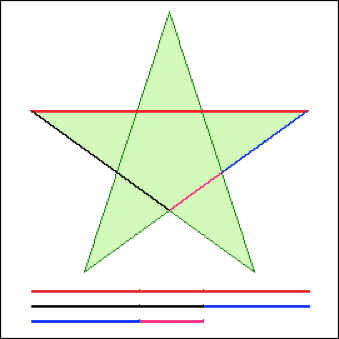

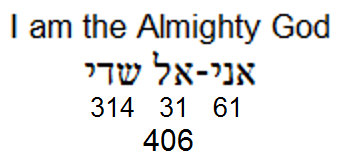
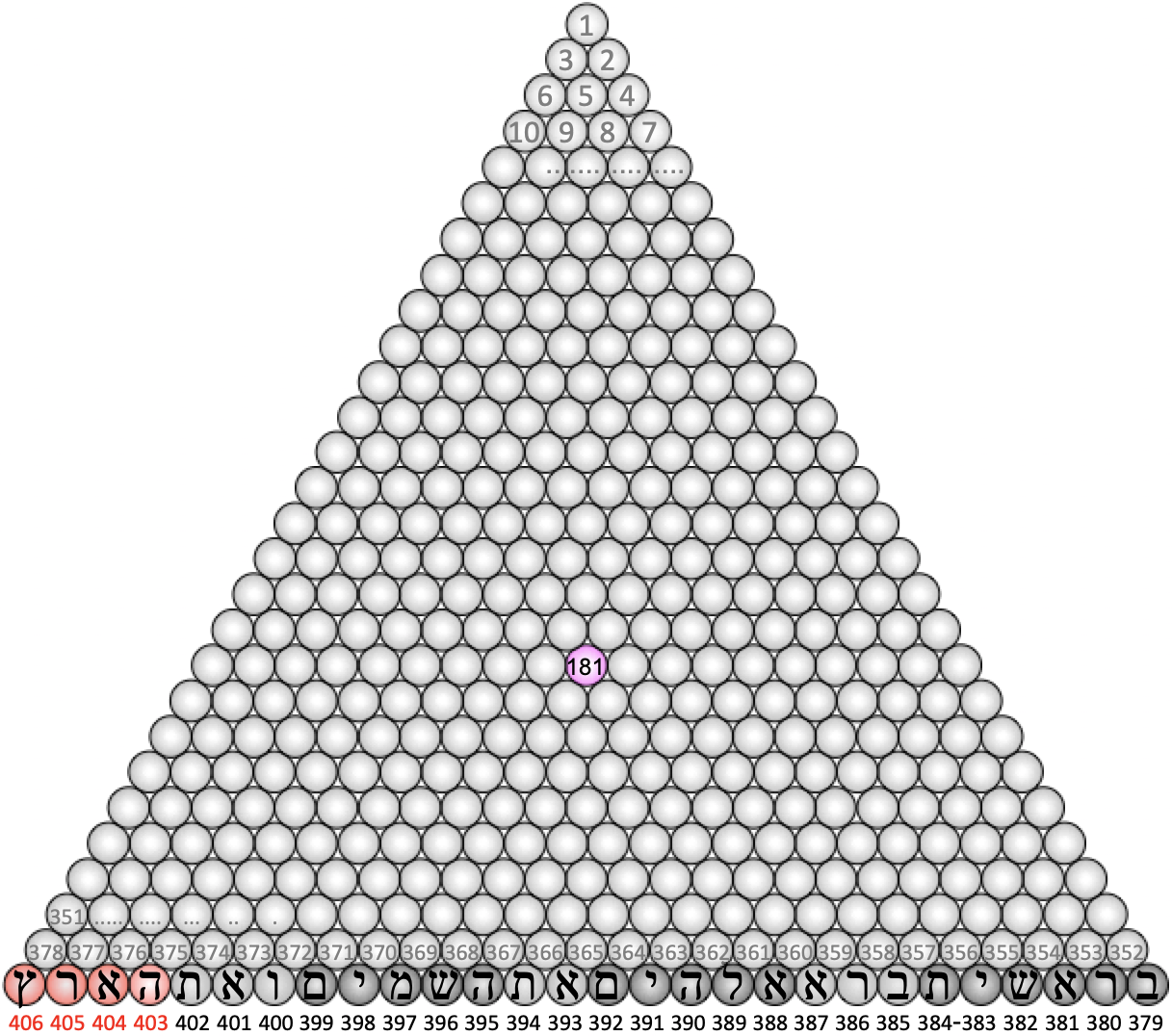
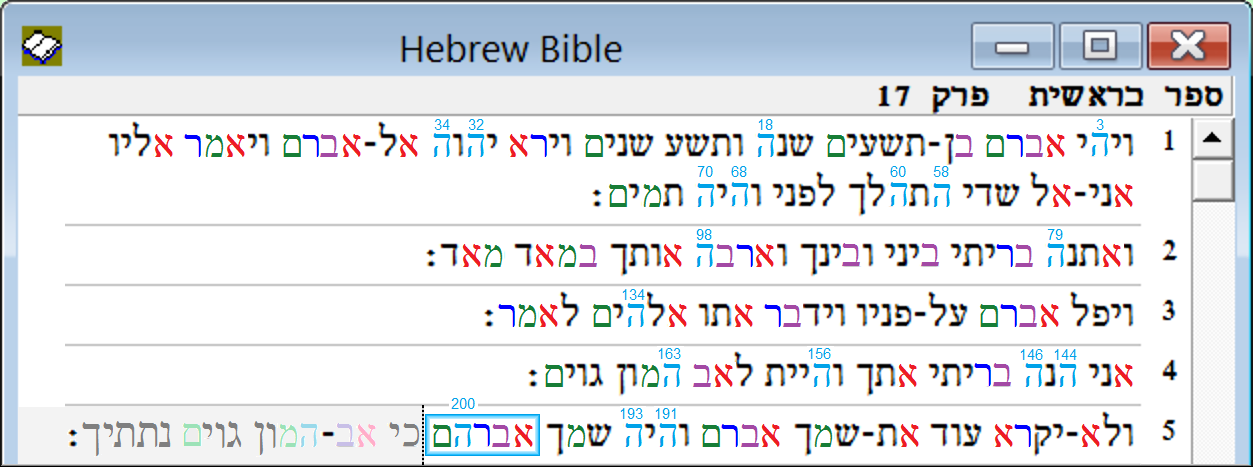

.png)
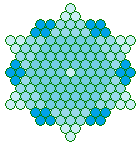

.png)
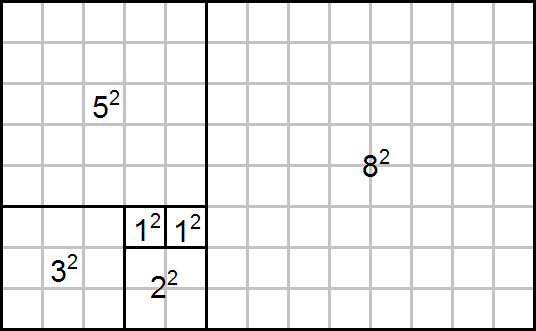
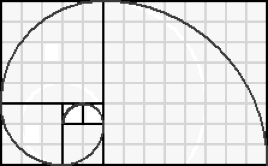
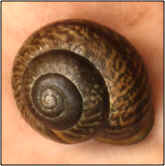
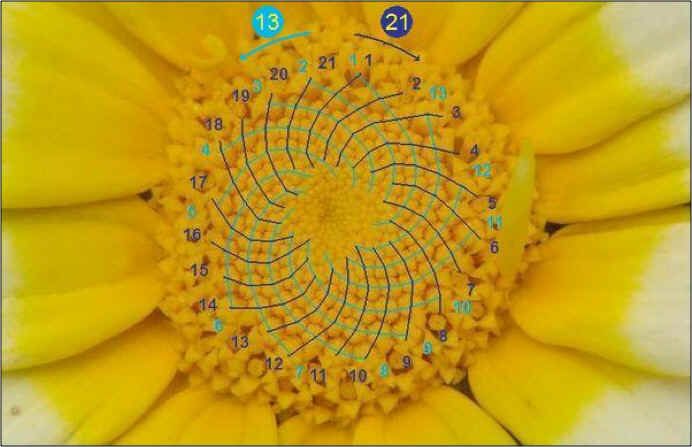
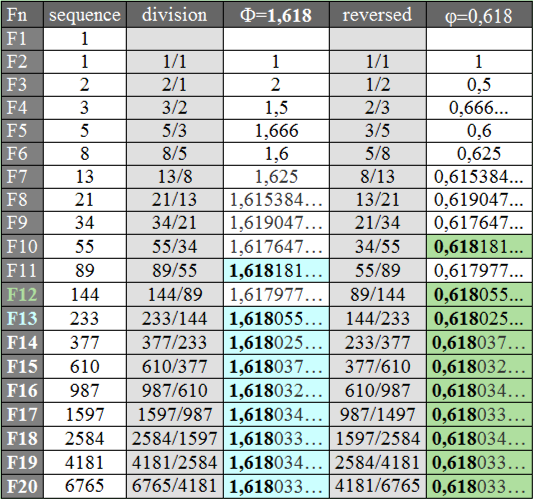
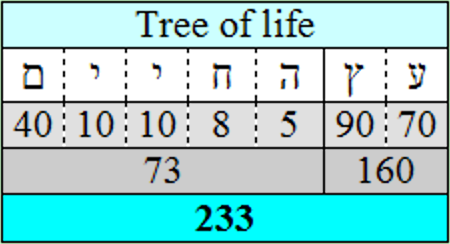
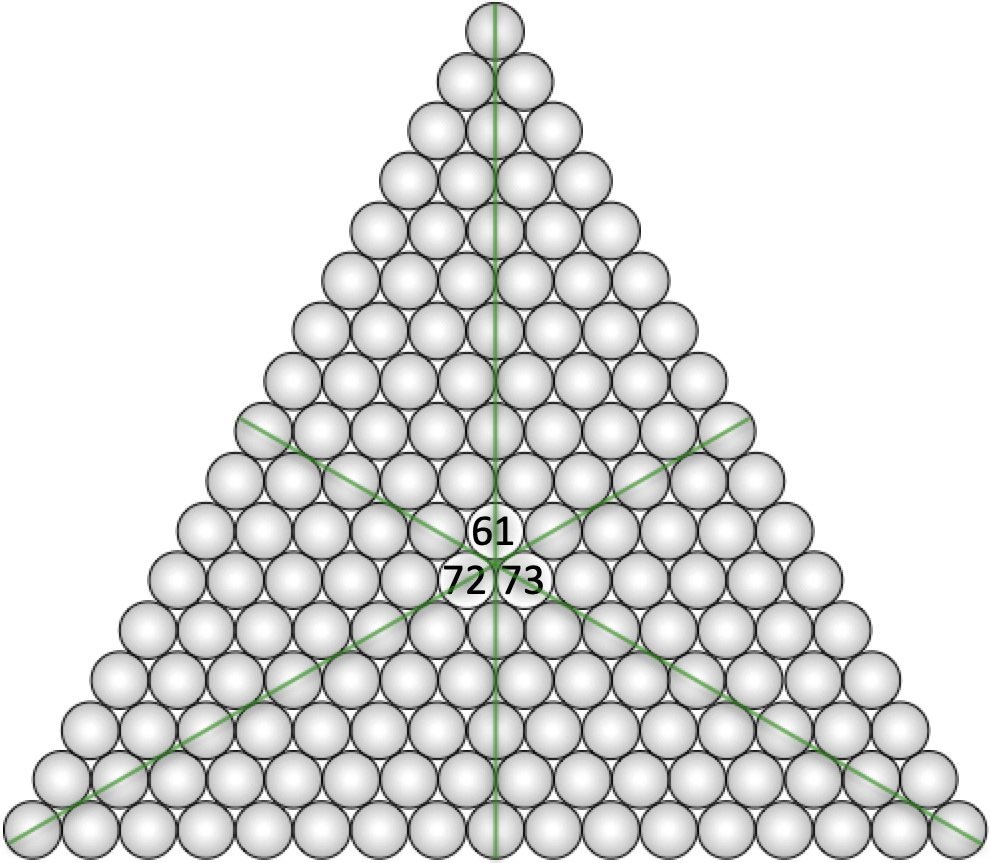
.png)
.png)

